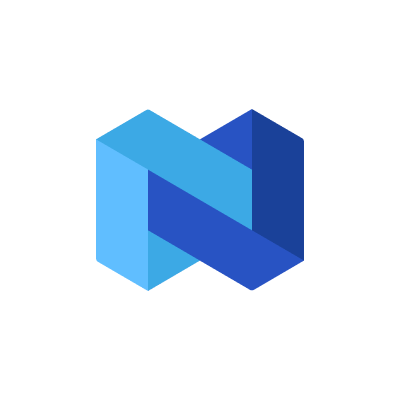The 101 Guide To Earning Crypto Yields November, 2024
Earning cryptocurrency can be achieved in different ways — staking and yield farming (often referred to as lending)
 Written by Nikolas Sargeant
Written by Nikolas Sargeant
| Avgifter | Insättningsalternativ | |||||||||
|---|---|---|---|---|---|---|---|---|---|---|
| Namn | Kryptos | Taker | Maker | Uttag | Banköverföring | Kreditkort | USA tillåtet | Grundades år | Offer | |

Binance
Centralized Exchanges
|
431 | 0.10% | 0.10% | 0.0002 | 2017 |
FÅ UPP TILL USD 100 I VÄLKOMSTBONUS
|
Besök | |||

Huobi
Centralized Exchanges
|
415 | 0.20% | 0.20% | 0.0001 | 2013 |
FÅ UPP TILL 300 USD I VÄLKOMSTBONUS
|
Besök | |||

Compound Exchange
Decentralized Exchanges
|
9 | 0.002253 | 2019 |
|
||||||

Binance DEX
Decentralized Exchanges
|
64 | 0.10% | 0.10% | 0.000375 BNB | 2019 |
|
||||
Crypto yields allow token holders to capitalize by earning from their cryptocurrency holdings. There are various choices for earning yields on your crypto; some are straightforward and ideal for novices, while others are better suited to experienced investors. By offering your cryptocurrency to lend or stake, you can yield rewards up to 20% APY or higher, depending on the method, exchange, and cryptocurrency.
For those crypto holders that are ‘HODLing’ for the long term, you might think about giving or staking your tokens to accrue extra rewards. But before you begin, here's what you should know.
TLDR:
- Crypto staking offers token holders the opportunity to profit from storing their money through various methods.
- Stake your funds and get paid out with rewards in various cryptocurrencies and tokens.
- Earning can be done by staking, loaning, or yield farming through centralized exchanges, decentralized exchanges (DEXs), and nodes.
- There’s always an element of risk, but some crypto-yield alternatives offer more control of your finances than others.
How to Earn Yield on Your Cryptocurrency
Earning cryptocurrency can be achieved in different ways — staking and yield farming (often referred to as lending). The difficulty for each method fluctuates, and every possibility may suit a specific kind of investor better. Here are your options for earning with your cryptocurrency — and how easy or difficult each technique is.

But what are we talking about when we say lending and staking, and what’s the difference? Let’s quickly explore this theme.
- Staking - Staking requires a user to lend an individual token to an exchange, locking them into a flexible or set period, then paying out in passive income on a daily, weekly, monthly, or yearly basis.
- Yield Farming - Yield farming is a service DeFi exchanges offer. The principal concept is that you lend your tokens to a DEX, allowing it to offer buyers and sellers appealing levels of liquidity on a specific trading pair.
Top Lending Platforms In 2023
For users interested in earning, our team of in-house crypto experts has put together a list of the top five alternatives available in 2023. In no particular order, here are five of the best:
- Nexo - Nexo is a centralized lending institution operating in the crypto lending space since 2018.
- Huobi - Leading Chinese crypto exchange, boasting over 10 million users globally and an excellent lending program.
- Binance - World renowned crypto trading platform offering a wealth of investment products and cryptocurrencies.
- Compound - Voted decentralized exchange of the year in 2020 and continues to grow through its DAI-earning products.
- YouHodler - Centralized exchange offering Crypto-backed loans, Savings Accounts, and Multi HODL functionality.
Beginner Method: Through An Exchange
Staking cryptocurrency involves making your crypto available to authenticate transactions on a cryptocurrency's blockchain matrix. Most types of staking will not require customers to keep their tokens staked for a set time, meaning you can reclaim them whenever (flexible staking). Nevertheless, after unstaking them, there is usually an interval - sometimes referred to as a “cooling” period - before the tokens are returned to your purse.
Visiting the "Earn" part of certain top-rated crypto exchange sites, you can put your digital assets into action through various crypto staking options. Pick your desired cryptocurrency, put in the minimum, or more, amount of crypto the platform needs, and start looking forward to passive growth on your investment.
Pros:
- Easy access for crypto beginners and first-timers.
- Commonly centralized exchanges offer a simple tax reporting option for declaring staking rewards claimed.
- Typically exchanges offer an all-in-one crypto platform, including a wallet where staking rewards will be collected.
Cons:
- Your keys are with the exchange, which brings with it a level of risk.
- On occasion, the exchange charges a staking fee, which is paid out as a percentage of your earnings (e.g., Coinbase charges 25%, while eToro charges 10% to 25%).
- Users will pay gas fees to stake their tokens depending on the network.
Best Decentralized Exchanges For Staking
Many crypto investors prefer to stay in keeping with crypto's philosophy and invest with only decentralized platforms. We put this shortlist to make it easier for you to find the best DEX (decentralized exchange) for staking.
- Kyber Network - Top-tier DeFi provider offering its on-chain liquidity protocol allowing for decentralized token swaps to be integrated into any application.
- Bisq - An easy-to-use DEX requiring no identification verification and offering its code open source, allowing users to participate in the project strategy.
- IDEX - The platform has been operating since 2016, offering smart contract support for real-time trading.
- Honeyswap - A decentralized exchange deployed on the xDai chain, which supports Polygon protocol and plans to integrate with the Arbitrum chain.
- Binance DEX - The exchange is supported by the biggest name in the crypto space, so it offers safe and secure trades with low trading fees.

Beginner Method: Exchange Lending
A variety of online providers offer crypto loans. Crypto loans allow customers to access mutual loaning of coins and tokens. Tokens can be employed for borrowing goals on digital currency credit and loan stages. Crypto lending is similar to loans offered through banks and other financial bodies. In some cases, users borrow a certain amount of money. Then, after a certain period, the borrower repays the tokens they received in addition to interest—often, traditional financial institutions will offer no-interest loans.
Crypto loan terms allow speculators to advance their tokens for an "open term," giving them a chance to pull out their tokens whenever they please. Instead, they can secure a fixed-term advance, which may extend several months or even years, which can often offer higher yields.
Pros:
- High potential for a great return on investment, generating passive income.
- Exchanges will provide tax reporting forms to register lending income.
- No requirement for traditional banks to lend or borrow, opening up the opportunity to lend crypto to a wider audience.
Cons:
- The custody of tokens in the hands of the exchange adds an element of risk.
- The risk of debt to the lending provider if the funds aren’t managed properly.
- There’s a chance that the crypto borrower could default on their loan, nullifying any crypto earnings accumulated.
Intermediate Method: Staking Pools
Staking via a validator or staking pool is comparable to the staking services on an exchange. The difference is that the staking process is carried out directly on the blockchain. Investors earn from the profits provided by transactions but by removing the middleman (exchange) and receiving the fees directly. By delegating your tokens to a validator, you will still be involved in the ownership of your tokens.
The validator uses your delegated tokens to increase its probability of being picked for affirming a new block in the sequence. Following the validation of a newly formed block, the staking earnings are shared among those who put their coins into it. Once you transmit your tokens to a pool for staking, the token custody transfers over to the foundation that's managing the validator—but it depends on the network.
For example, you can commit Polygon tokens to a validator and maintain control of your MATIC. However, the platform holds ETH guardianship if you convey Ethereum units to a stake pool.

Taking into account the token you opt to stake, there is rarely any definitive length of time for how long you have to stake coins. As a rule of thumb, you can take away your tokens anytime. That said, there's usually an unbonding period after you cease staking your tokens that drags on from multiple days and sometimes up to weeks.
Pros:
- Not using an exchange means cutting out the middleman, lowering fees, and maximizing rewards earned.
- Investors are not required to be their validators, thus lessening access requirements and permitting more persons to stake on a blockchain.
- As more people and funds join in, the stakes become progressively better, resulting in larger and more regular transactions.
Cons:
- Individual staking or validating pools impose very strict minimums that may not be suitable for investors with less capital.
- Validators must meet a certain amount of subscriptions, or they could be penalized by the network. Also, penalties could be imposed if the pool doesn’t perform well, leading to potential losses for investors.
- Your crypto is not under your control, which comes with risk.
Advanced Method: Running a Validator
Running a validator is a form of investing. The key variance with running a validator and other methods we’ve mentioned is that operators are responsible for adding new blocks to the blockchain through an automated voting process. Block creators are called validators and are responsible for checking transactions, verifying activity, voting on outcomes, and maintaining records.
Validation requires an initial investment due to the need for advanced computing capability and swift web speeds to guarantee 24/7 availability and dependability. It's a pricey approach for profiting on crypto and even costlier considering the minimum token staking demands and the costs of running a validator. Additionally, if you encounter technical difficulties with your hardware or software while operating a validator, you can be penalized, also called ‘slashing.’
Pros:
- An individual process where no middleman is involved, so you reap the full benefits of rewards.
- You have much more control of your digital assets than staking with an exchange or via a staking pool.
- As the validator, you can earn based on tokens delegated to you by other users.
Cons:
- Running your validator is highly technical and requires a hefty initial investment to set up the hardware.
- If your validator is found to have validated fraudulent blocks or you encounter technical difficulties, which is common, you may have your rewards rescinded.
- You are required to hold the minimum number of tokens to start a node, which is often in the tens of thousands of dollars.

Staking vs. Lending
Staking and lending are both means users can gain an advantage on the digital assets they possess. The distinction lies in the process. With staking, customers lease their crypto to the blockchain system or contract their stake to another validator. The validator examines transactions and adds blocks to the network. Thanks to their delegation of coins, they receive rewards for doing this. Customers can also loan their cryptocurrencies from exchanges to use at their discretion. And for the cryptocurrencies they loan, they will receive an interest rate refunded by the lender.
The main advantage of staking and lending is that it allows users to gain a passive income through crypto without relying on an upswing in market price. Using staking or digital lending currencies, users will receive more digital assets. This is particularly beneficial for individuals planning to store their virtual assets for extended periods.
The downside of staking and lending at high percentages is that investors may risk losing their funds. Many exchanges offer a Loan-to-value (LTV) ratio of your loan to the value of your collateral, allowing users to help protect themselves if the market falls. While there could be strong returns, there is still a probability that profits will not be collected, and the whole stake might be erased. Hence, it is essential to assess any crypto endeavor in which risk is involved thoroughly.
Popular Yield-Earning Cryptos
As you would imagine, the most popular cryptocurrencies for yield-farming are overall the most popular in the crypto space. If you’re looking into earning from exchanges, the most popular currencies are the ones they offer earn yields on. Some examples of the most popular currencies are:
- Ethereum (ETH)
- Polygon (MATIC)
- Bitcoin (BTC)
- Solana (SOL)
- Cardano (ADA)
- Tether (USDT)
- Binance Coin (BNB)
- MultiversX (EGLD)

In Summary
Whenever you invest in cryptocurrency, there's a level of risk involved. That's why it is essential to research and pick a crypto-earning process that aligns with your risk level.
Digital currency can allow you to receive passive income, which makes it a straightforward and appealing method to broaden your current portfolio. When you are prepared to explore staking with cryptocurrency, ensure that you pick the earning procedure suitable for you and shop around for the right exchange to suit your investment needs.
Author

Nik is a content and public relations specialist with an ever-growing interest in Crypto. He has been published on several leading Crypto and blockchain based news sites. He is currently based in Spain, but hails from the Pacific Northwest in the US.
| Avgifter | Insättningsalternativ | |||||||||
|---|---|---|---|---|---|---|---|---|---|---|
| Namn | Kryptos | Taker | Maker | Uttag | Banköverföring | Kreditkort | USA tillåtet | Grundades år | Offer | |

Binance
Centralized Exchanges
|
431 | 0.10% | 0.10% | 0.0002 | 2017 |
FÅ UPP TILL USD 100 I VÄLKOMSTBONUS
|
Besök | |||

Huobi
Centralized Exchanges
|
415 | 0.20% | 0.20% | 0.0001 | 2013 |
FÅ UPP TILL 300 USD I VÄLKOMSTBONUS
|
Besök | |||

Compound Exchange
Decentralized Exchanges
|
9 | 0.002253 | 2019 |
|
||||||

Binance DEX
Decentralized Exchanges
|
64 | 0.10% | 0.10% | 0.000375 BNB | 2019 |
|
||||

